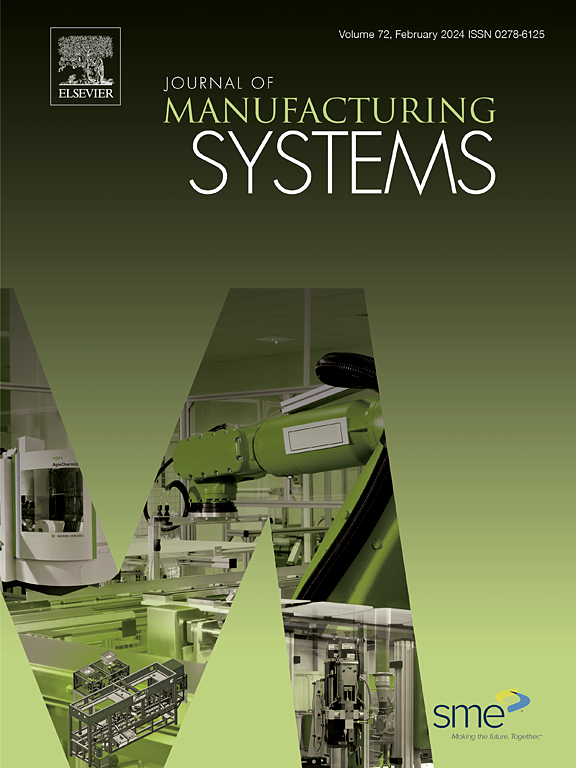Intelligent monitoring system for production lines in smart factories: A hybrid method integrating Transformer and Kalman filter
IF 12.2
1区 工程技术
Q1 ENGINEERING, INDUSTRIAL
引用次数: 0
Abstract
Intelligent monitoring systems for production lines in smart factories are used to ensure production efficiency, quality control and fault warning, promoting the optimization of production processes and resource allocation. Tool wear monitoring (TWM) bridges the gap between the perception of machining state information and accurate health management of tools. However, signal features undergo significant and abnormal changes during the late-stage of tool wear, posing substantial challenges to the development of an accurate tool wear intelligent monitoring model. In this paper, a hybrid TWM model integrating the Transformer and Kalman filter is proposed, with a state-space model of tool wear constructed and dynamically updated to address the gap in late-stage prediction accuracy of existing TWM methods. Specifically, the Transformer model is designed to describe the observation model of early tool wear states based on monitoring data. A system model is developed based on the actual tool wear mechanism to describe the relationship between the tool wear rate and tool-workpiece contact load over time. The Kalman filter is used to estimate the parameters of the mechanism model and track the evolution of wear. Within the Bayesian inference framework, measurement noise in the monitoring data is accounted for to optimize and update state estimation deviations and mechanism model parameters, enabling late-stage wear prediction through posterior estimation. The effectiveness and generalization of the proposed method are validated through milling experiments on both thin-walled and rectangular block parts. The experimental results indicate that the average RMSE error of tool wear prediction for thin-walled parts is 6.02, while for rectangular block parts, it is 4.70. The average RMSE errors of the proposed method are reduced by 16.34 % and 11.31 %, respectively, with respect to the single model. More importantly, the proposed method for TWM demonstrates strong predictive performance in the late-stage of tool wear while quantifying the uncertainty of wear prediction.
求助全文
约1分钟内获得全文
求助全文
来源期刊

Journal of Manufacturing Systems
工程技术-工程:工业
CiteScore
23.30
自引率
13.20%
发文量
216
审稿时长
25 days
期刊介绍:
The Journal of Manufacturing Systems is dedicated to showcasing cutting-edge fundamental and applied research in manufacturing at the systems level. Encompassing products, equipment, people, information, control, and support functions, manufacturing systems play a pivotal role in the economical and competitive development, production, delivery, and total lifecycle of products, meeting market and societal needs.
With a commitment to publishing archival scholarly literature, the journal strives to advance the state of the art in manufacturing systems and foster innovation in crafting efficient, robust, and sustainable manufacturing systems. The focus extends from equipment-level considerations to the broader scope of the extended enterprise. The Journal welcomes research addressing challenges across various scales, including nano, micro, and macro-scale manufacturing, and spanning diverse sectors such as aerospace, automotive, energy, and medical device manufacturing.
 求助内容:
求助内容: 应助结果提醒方式:
应助结果提醒方式:


